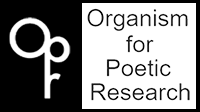Rough Sketch
- No products in the cart.
By Lida Pawliuk
Thinking of Bernd and Hilla Becher’s aesthetic typology of the numerous forms of industry and tradition – The grids of similarity and difference – The obsessive quality of taxonomic classification – A rhythm made from repetition and the playful placing of lines to determine a landscape (1) – What is made from the geometries of buildings, the weathering of stone, and the meeting of points of light and shadow across a floor – A childhood game – The purest philosophy gained from observation and experience – Arranging a series of events to summarize significance: it is all bridges, towers, fogs (2) – A system of organization – An exercise in divination – Patterns formed along the “ramp of duration” (3) – Practically we perceive only the past, the pure present being the invisible progress of the past gnawing into the future (4) – It is both a work of memory and immediate perception – The shutters are closed mid afternoon in the summer and while I may see its eventual shadow as narrow sections of a camera obscura, W.G. Sebald may imagine a crooked Jacob’s Ladder slicing its way through the darkened room (5)
(1) Klee, Paul. Pastorale (Rhythm). 1927. MoMA Collection,
http://www.moma.org/collection/object.php?object_id=79012 (accessed September 9th, 2014).
(2) Nabokov, Vladimir. Ada, or Ardor: A Family Chronicle. (New York: Vintage International, 1990). 74-75.
(3) ibid
(4) Bergson, Henri. Matter and Memory. trans, W.S. Palmer and N.M. Paul. (New York: Cosimo Classics, 2007). 194.
(5) Sebald, W.G. The Emigrants. trans, Michael Hulse. (New York: New Directions, 1997). 200.
